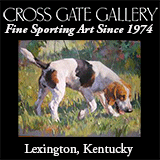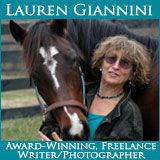Sierra Nevada Hounds Kennels Fixture February 2
Reno, Nevada at an Elevation of 6,000 feet in the High Sierra Desert

February was the six-month post-operation mark, and the surgeon told me that I could start riding again this month. So of course I foxhunted on February 2nd. Doesn’t everyone? I went out with my home hunt of Sierra Nevada Hounds just north of Reno, Nevada. The high Sierra desert has a footing of eroded granite, so it’s like riding in an arena. But with endless sagebrush, peach thorns, boulders, and the occasional juniper tree. Bonus is that there are rarely any holes to avoid. To ride through the sage, the horse not the rider has to decide if he will go left around the sage, go right, crash through the bush, or just jump the whole thing. As there is no straight line in the sage, the rider has to be ready to pole bend every stride as the horse decides on the fly.
Hounds must be hunted towards known water sources in the desert, as the pack needs to be watered several times during a hunt to keep their noses wet for scent. And while sound doesn’t carry well in the treeless landscape, the dramatic visuals that stretch for miles certainly make up for the loss of hound music.
Raina Robrahn, MFH and Huntsman, hacked out our pack of Walker Hounds from the kennels to the Bureau of Land Management (BLM) area we call No Man’s Land. I only went out for an hour or so before I turned back. I hunted my 26-year-old horse, Phillip. He’s fat, hairy, and completely out of condition for hunting. But he still launched over a sagebrush as we trotted up a steep hill. Jumping my first time out was not in the plan, but Phil has never met a sage or peach thorn that he hasn’t wanted to overjump.
The pack didn’t stay out too long after I did. They got on a short run but had a harder time continuing as the wind started to howl with the snow system that was moving into the valley fast. I mentally checked off the boxes that I remembered how to post, use leg, two-point, and dismount. At first, my unused muscles hurt from the trotting, but the longer I trotted the less pain I felt. With that good news, I thought that taking a multi-week, cross-country road trip to hunt my way to the East Coast and back was a great idea to test the strength of my new titanium.
Kit Fox

On the first day, I drove to Las Vegas from Reno, which is an all-day drive due to the distance and the fact that there is no interstate between the two cities. It’s a two-lane highway the entire way, slowing down to 25 miles per hour in the few towns that dot the way south.
I saw several bands of Mustangs off the side of the road, but the best view was when I was near the Mojave Desert and Death Valley National Park. I was just outside of Beatty, Nevada, which is famous for its wild burros that wander the streets. I came around a corner and in the middle of the road was a Kit Fox. They are only found near the Mojave. He looked up from whatever he was snacking on in the middle road and glared at me before bounding off into the dark. He was very small and looked to be all tan or light grey. I figured that was a good omen for the start of my trip.
Caza Ladron Hunt Camel Tracks Fixture February 10
Santa Fe, New Mexico at an Elevation of 7,400 feet in the High Desert (Volcanic)

I joined Caza Ladron hunting their Camel Tracks fixture just outside of the kennels located at the horse show facility called HIPICO near Santa Fe, New Mexico. The fixture is named for some pre-historic camel tracks frozen in the rocks in the Caja del Rio, or “box of the river”. The fixture is dotted by several rounded hills that are extinct volcanos. The closer you are to the hills the more lava rocks litter the ground. The lava rocks came from ancient eruptions that spewed lava bombs into the air. Cholla cactus, pinyon pines, and juniper trees are to be avoided at all costs, when possible, as all can rip cloth and even puncture the leather of riding boots.
While there are sparse trees here, covert is usually found in the arroyos. Arroyos are washes or ditches that hold the flash floods when rain does occur. This allows the sagebrush and other plant life to grow thicker and taller in the arroyos.
Rick Atchinson, honorary huntsman, took out seven couple of crossbreds with about nine riders. I was riding Master Nancy Ambrosiano’s Halflinger mare, Delilah. We went to the local honey hole, an arroyo at the base of two hills connected by a saddle or a small rise. The hounds gave voice down in the arroyo and then raced up over the hill, hot after the coyote. Some of the staff were stuck at the top of the ancient volcano, watching as the pack was already down the other side on the flats, racing the coyote. Whipper-In Betsy Atchinson was able to view the coyote on the backside of the hill and described the view as, “Glorious like in a movie!” Back at the clubhouse later that day, Master Nancy was jealous of her view, Betsy couldn’t stop herself from baiting Nancy every chance she got with more, “Glorious like in a movie!” over and over.

Nancy and I were next to the arroyo but missed the view. We trotted around to the saddle and climbed the rise, over the loose lava rocks and avoiding the chollas. By this time Mother Nature had opened up her snow machine and was dumping us in earnest. My frock coat was now white and my face had frozen. Rick had called the pack in due to the snow making it impossible for him to see or hear the pack. Nancy and I tried to find the meet again, but the white-out had us turned around for a while. It took Master Richard Patton blowing his truck horn for us to find our way back to the meet. We went seven miles that day, and we cantered along the BLM road in the snow.
The plan was for me to leave from the hunt breakfast for Dallas, Texas. But I didn’t fancy driving twelve hours in a snowstorm. Oh darn, I got to hunt another day in New Mexico.


















